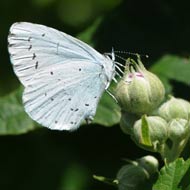
Results of the Big Butterfly Count released
Holly blue butterflies are up by a staggering 151 per cent this year, according to the results of the latest Big Butterfly Count. In fact, more than half of the target butterfly species have seen a boost.
Large white butterflies did well too, with 46 per cent more sightings recorded than last year. Painted lady numbers rose by 28 per cent, while gatekeeper numbers reached the highest level seen in the six years the count has been carried out.
In total, 11 of the 20 target species increased, two remained more or less the same and seven declined.
Despite these positives, several species that did well in 2014 fell back in numbers this year. While the peacock butterfly came out on top last year, it had declined substantially in the latest count (61 per cent).
Likewise, small tortoiseshells suffered a reversal of their recent surge, dropping by 57 per cent.
Stark declines were seen in the overall abundance of butterflies in Northern Ireland and Scotland, which suffered disproportionately bad weather this summer, particularly in July. Numbers fell by 41 per cent and 37 per cent respectively.
For the full results, see: http://www.bigbutterflycount.org/2015mainresults
Image © Zeynel Cebeci/Wikimedia Commons CC BY 3.0



 BSAVA is to partner with BVA Live (11-12 June 2026) to champion clinical research.
BSAVA is to partner with BVA Live (11-12 June 2026) to champion clinical research.